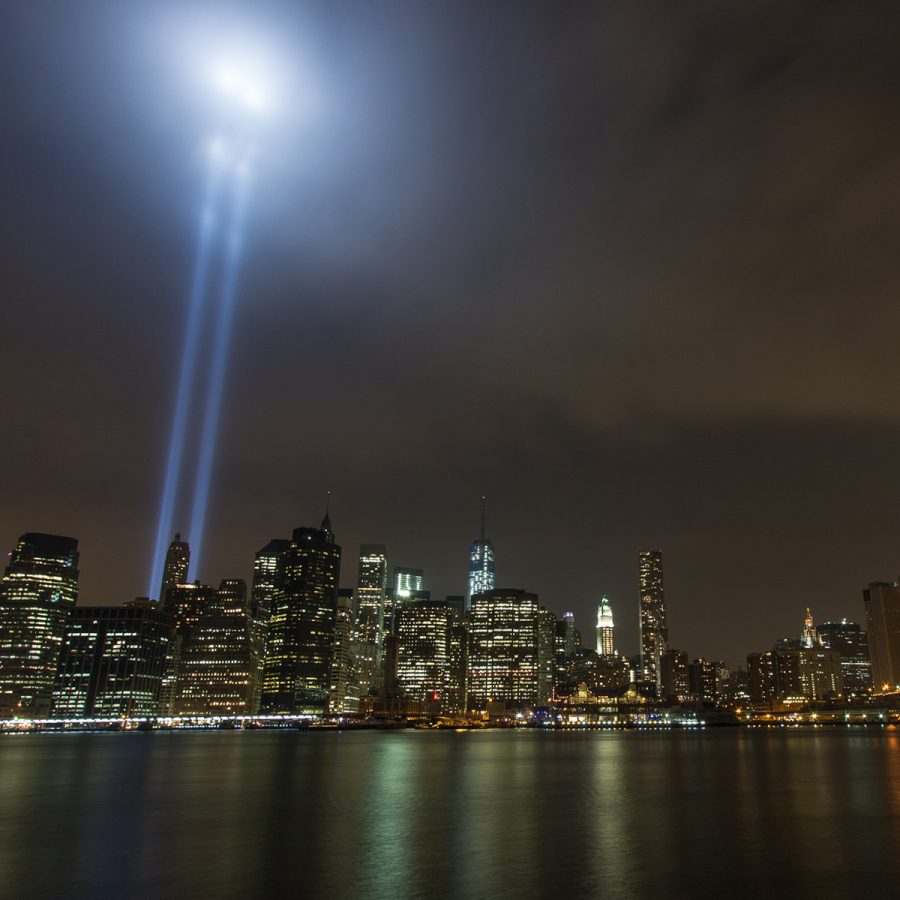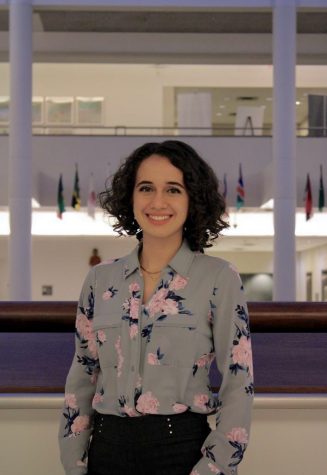Remembering 9/11’s impact on Baruch and CUNY on its 20th anniversary
September 24, 2021
Sept. 11 marked the 20th anniversary of the terrorist attacks at the World Trade Center, the Pentagon and aboard United Airlines Flight 93, which killed more than 3,000 people.
“Twenty years later, though time has provided some historical perspective for the attacks of 9/11, we remember that day with no less horror at the calculated and inconceivable evil of the terrorists, the many lives they destroyed and the anguish they have caused our University, city and country to this day,” Chancellor Félix Matos Rodríguez said in a CUNY newsletter on the 20th anniversary.
Four Baruch students — Joseph Amatuccio, Marina Gertsberg, Neil Hinds and Charles Lesperance — died in the attacks.
Amatuccio was the manager of operations and maintenance at the World Trade Center. He was 18 months away from receiving his master’s degree from Baruch.
The New York Times reported that on the day of the attacks, the 41-year-old man was seen running back into the twin towers.
Gertsberg, a 25-year-old Brooklyn resident, had just begun her first semester at Baruch as a master’s student.
Hinds was a 28-year-old husband and father. The computer information systems major had only one semester left until graduation. He worked for the Bank of New York, according to The New York Times. Falling debris killed him while he was attending a seminar near the World Trade Center.
Lesperance, who had a Master of Business Administration from Columbia University, was working toward a second bachelor’s degree at the age of 55. He worked for the State Department of Transportation as a systems analyst, according to The New York Times.
One Baruch faculty member, as well as 33 alumni and former students, also died in the attack.
“We pause to remember all who lost loved ones and all who lost their lives, including 38 members of the Baruch community,” Baruch President S. David Wu wrote in an email blast sent on Sept. 9.
In his message, Wu also shared his personal experience of 9/11. He was a professor at a college in Pennsylvania.
“Notwithstanding that physical distance, I was profoundly affected,” he said. “I remember that September day—with a clear, blue sky—and that I was teaching a large class when the news broke. I remember many of my students had family members and friends working in the Twin Towers, and they were shocked, confused, and shaken. The images of 9/11 are seared into our national consciousness.”
After Wall Street was shut down due to the disaster, 30 Wall Street traders from two firms — Gruntal & Co. and Refco Inc. — were displaced.
Their solution was to use Baruch’s Subotnick Financial Services Center as a temporary, but actual, trading floor.
“It was all done in 48 hours,” Chris Ruemke, the trading floor manager at the time, told The New York Post in 2001. “We had to scrounge from other rooms to provide the trading floor with more equipment. I no longer have a phone on my desk. It’s being used by the traders on the floor.”
Baruch also acted as a space for first responders and relief workers to access services, as part of its partnership with the National Guard and the Mayor’s Office of Emergency Management.
Hundreds of people seeking information about missing loved ones were on line outside of the Lexington Avenue Armory, which is located between East 25th and 26th Streets.
The lobby of the Newman Vertical Campus, which had just opened at the time, was used by these people while waiting. Faculty and staff with mental health training gave assistance.
New York City businesses obtained federal emergency relief with the help of Baruch’s Field Center for Entrepreneurship. It helped some of these businesses receive loans within two days of the attacks.
Students and student organizations contributed to the 9/11 response by organizing concerts for first responders and raising money for the American Red Cross.
“At every turn, the Baruch community demonstrated its grit, compassion and can-do spirit,” Wu said. “Its collective response reflected our mission to serve and our responsibility to lead.”
On the 12th anniversary of 9/11, the Undergraduate Student Government partnered with the Baruch Veterans to hold a memorial. Students gathered in the plaza at night to light candles in honor of those who died.
“Many of those lost that day, including dozens of heroic first-responders, were members of the CUNY community,” Matos Rodríguez said. “We remember and pay tribute to them on our campuses every September 11. On this 20th anniversary, I hope that all of us — including today’s students who weren’t born yet or are too young to remember — honor their memory by doing what universities do: by learning, by teaching and by furthering understanding that helps make the world a more just, equitable and enjoyable place to live.”
Several CUNY colleges commemorated the anniversary with both in-person and virtual ceremonies.
Borough of Manhattan Community College’s campus, located in Lower Manhattan, was close to the attacks. Eight students and alumni died.
It is the only college in the United States to lose a building to terrorism, according to Inside Higher Ed.
Due to the attacks’ unique impact on the college, Matos Rodríguez and BMCC President Anthony Munroe placed a wreath on the plaque honoring the deceased on Sept. 9.
The community college also live–streamed a commemoration event. BMCC administrators, faculty and students from Fall 2001, as well as historical footage, were featured.
In a YouTube video released on Sept. 10, John Jay College paid tribute to those who died on 9/11.
The College of Staten Island held a memorial service on Sept. 10 at its 9/11 memorial site, which honors alumni who died that day. The event was also live-streamed.
“It is not hard to see the parallels between the time 20 years ago and the present: sadness, fear, vulnerability, uncertainty, as well as determination, resolve, and perseverance,” Wu said. “We continue to come together to face adversity and our society’s most serious challenges, which provides all of us with a sense of hope for the future. New York will come back as it always has, and so will Baruch.”








